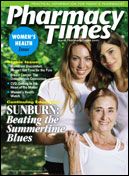Publication
Article
Pharmacy Times
Rx Product News: Profile: A Closer Look at New FDA Actions: Nuvigil
Author(s):
This single, longer-acting R-enantiomer of the racemic modafinil has been approved as a wakefulness-promoting drug.
Ms. Domenici and Dr. Patel are both pharmacists at Brigham and Women's Hospital, Boston, Massachusetts. Mr Millin is a sixth-year PharmD candidate from Northeastern University currently on clinical clerkship in the Investigational Drug Service at Brigham and Women's Hospital.
Cephalon's Nuvigil
Armodafinil (Nuvigil), a new wakeful-ness-promoting agent, received FDA approval on June 15, 2007.1 Nuvigil is indicated for patients experiencing obstructive sleep apnea/hypopnea syndrome (OSA/HS), narcolepsy, and shift work sleep disorder (SWSD) to help combat symptoms (eg, daytime fatigue, sleepiness due to sleep apneas).1 Nuvigil is the single, longer-acting R-enantiomer of the racemic modafinil (Provigil) and is indicated for once-daily dosing.2 Nuvigil and modafinil share similar wake-promoting effects as sympathomimetic amines (eg, amphetamine, methylphenidate) but do not possess the same pharmacologic activity3
Pharmacology/Pharmacokinetics
The exact mechanism of Nuvigil is not fully understood at this point. Nuvigil does not appear to have an effect on neurotransmitters targeted by other wake-promoting agents (eg, serotonin). In vitro, Nuvigil demonstrated inhibition of dopamine reuptake.3 Other wake-promoting agents (eg, amphetamine) are antagonized when they are used concurrently with other dopamine antagonist agents (eg, haloperidol). When Nuvigil was administered with haloperidol, an antagonistic effect was noted.3
Steady-state drug levels were achieved in approximately 7 days. Nuvigil is readily absorbed from the gastrointestinal tract, and maximum serum concentration is reached within 2 hours in a fasting state. Food may slow the absorption of Nuvigil by 2 to 4 hours, which can lead to elevated concentrations later, altering the drug's onset and time course. The liver largely eliminates Nuvigil, and terminal half-life is about 15 hours.

Clinical Trials
The clinical effectiveness of Nuvigil was established in 3 distinctive sleep disorders: OSA/HS, SWSD, and narcolepsy. Each trial required a P value <.05 for statistical significance.3
All trials were 12 weeks, multicenter, randomized, double blind, and placebo controlled. Subjects were diagnosed for sleep disorders using the International Classification of Sleep Disorders scale.3 Subjects in the OSA/HS studies required an excessive sleepiness score >10 on the Epworth Sleepiness Scale, regardless of continuous positive airway pressure use.3
The 395 subjects in the first OSA/HS study received a once-daily dose of Nuvigil (150 mg or 250 mg) or matching placebo. The 263 subjects in the second OSA/HS study received either Nuvigil 150 mg or placebo once daily. The Clinical Global Impression of Change scale was used to measure the effectiveness of Nuvigil. Both studies demonstrated significant improvement in wakefulness in the Nuvigil groups.3
FDA approval of Nuvigil in SWSD was established in a study of 254 subjects randomized to receive either Nuvigil (150 mg/day) or matching placebo. Subjects were required to work a minimum of 5 night shifts per month and have excessive sleepiness at the time of their shift. Not all patients enrolled were diagnosed with SWSD; patients complaining of symptoms of sleepiness for 3 months also were enrolled. The Nuvigil group resulted in a statistically significant increase in time to sleep onset in patients with this disorder.3
Nuvigil effectiveness in narcoleptic patients was established in a study that enrolled 194 subjects3; all were diagnosed to receive a daily dose of either Nuvigil (150 mg or 250 mg) or matching placebo. In addition to narcolepsy diagnoses, patients also were required to have documented excessive daytime sleepiness. Patients with narcolepsy who received Nuvigil showed significant improvements in their ability to remain awake throughout the day, compared with placebo.3
Conclusion
Recommended dosing of Nuvigil is 150 to 250 mg per day3 Use of Nuvigil has not been studied beyond 12 weeks and should not be used as a long-term therapy. Patients who have cardiovascular disease or hypertension should not use Nuvigil. Nuvigil should be used only in patients with diagnosed sleep disorders as defined by Diagnostic and Statistical Manual of Mental Disorders criteria. Patients should be counseled on risk of dependency and not to take OTC decongestants.
Clearance of oral contraceptives may be increased in patients concurrently using Nuvigil; therefore, a secondary method of contraception always should be used.3 Nuvigil is in pregnancy category C and has not been examined in pediatric patients. The most common side effects include headache, dizziness, diarrhea, decreased appetite, and nausea.3
References
- Cephalon Receives FDA Approval of NUVIGIL(TM) for the Treatment of Excessive Sleepiness Associated with Three Disorders. Cephalon News Release. June 18, 2007. www.cephalon.com/newsroom/news_reader.aspx?ID=1016228. Accessed December 12, 2007.
- Thomson CenterWatch. Newly Approved Drug Therapies: Nuvigil (armodafinil). www.centerwatch.com/patient/drugs/dru955.html. Accessed December 18, 2007.
- Nuvigil [Product Information]. Frazer, PA: Cephalon, Inc; 2007. www.cephalon.com/newsroom/assets/Nuvigil_prescribing_information.pdf. Accessed January 21, 2008.







